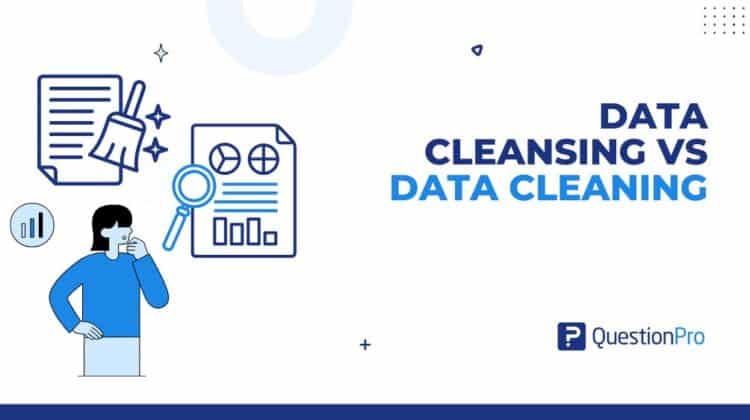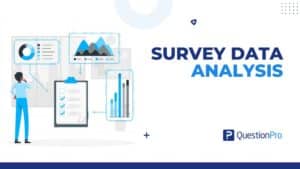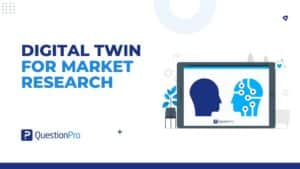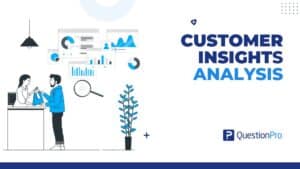
If you work with survey data, whether it’s from customer feedback, employee engagement surveys, or academic research, you’ve probably heard about data cleaning and data cleansing. They often sound interchangeable, and many people use them that way without realizing there’s a difference. Understanding the distinction between data cleansing vs data cleaning can help you approach your data more effectively and avoid common pitfalls that impact the quality of your insights.
Data cleaning and cleansing are closely related, but they’re not exactly the same. Knowing how they differ can make a real impact on how efficiently you handle data and how accurate and actionable your insights turn out to be.
Let’s take a closer look at the differences between data cleansing vs data cleaning and why understanding them can improve your entire survey workflow.
What Is Data Cleaning?
Data cleaning is all about fixing the obvious problems in your raw dataset so it becomes accurate, consistent, and ready for use. This is where you look for and correct things like:
- Typos or inconsistent formatting, such as “New York,” “NY,” and “new york”
- Missing values that could affect your analysis
- Duplicate responses from the same participant
- Survey entries that are incomplete or too short to be useful
You can think of data cleaning as proofreading your dataset. It is tactical, focused, and usually the first step before you do anything more advanced.
In survey research, this could mean:
- Removing responses that are less than 20 percent complete
- Fixing different answer scales, for example, some people rate on a scale of 1 to 5, and others on a scale of 1 to 10
- Making sure “yes,” “Yes,” and “YES” are recorded in one consistent way
For smaller datasets, this task can be completed manually in a spreadsheet. For bigger projects, researchers often use scripts or basic automation tools to speed things up.
The goal is to remove obvious errors so the data truly reflects what your respondents meant. A clean dataset gives you a solid starting point for deeper analysis and better insights.
What About Data Cleansing?
Data cleansing takes things a step further than basic cleaning. While cleaning is about removing obvious errors, cleansing focuses on improving the overall quality and usefulness of your data. The goal is to make sure your dataset is not only accurate but also reliable, standardized, and ready to be combined with other sources.
It includes cleaning, but it also goes further. With cleansing, you might:
- Merge datasets from different survey waves or channels so everything is in one place
- Align labels and formats, such as using a single standard for region names or industry categories
- Enrich responses with tags, categories, or sentiment scores to make analysis easier
- Ensure the data follows compliance requirements or matches your business logic
Think of cleansing as the strategic side of data quality. It prepares your survey data for the real world, where it often needs to be merged with other datasets, segmented by audience, visualized in reports, or even integrated into automated workflows.
In short, if cleaning makes your dataset error-free, cleansing makes it analysis-ready and powerful enough to drive decisions across your organization.
Also Check: Using data quality tool for your surveys
Data Cleaning vs Data Cleansing
Data cleaning and data cleansing sound interchangeable. Both are about improving the quality of your data, but the scope, approach, and outcomes are quite different.
Data cleaning is your first line of defense against errors in raw survey data. This is where you address obvious issues, such as typos, inconsistent answer formats, missing values, and duplicate responses. The goal is to make the dataset accurate and usable right away.
On the other hand, Data cleansing is more strategic and focuses on improving the overall quality and consistency of your data across sources and over time. This could mean merging multiple survey datasets, aligning naming conventions for geographic regions, adding sentiment tags, or ensuring data meets compliance rules.
In other words, cleaning prepares your data for today’s analysis, while cleansing ensures your data is ready for ongoing use and system-wide integration. Both are important, but knowing the difference helps you plan a more efficient and reliable data workflow.
| Aspect | Data Cleaning | Data Cleansing |
| Primary Goal | Fix immediate errors in raw data | Improve and standardize data quality across datasets |
| Scope | Narrow – focuses on the current dataset | Broad – works across multiple datasets and systems |
| Typical Tasks | Correct typos, remove duplicates, handle missing values | Merge datasets, align naming conventions, enrich with tags/categories |
| Approach | Tactical, often manual or script-based | Strategic, often involves automation and integration tools |
| When It Happens | First step after data collection | After cleaning, before integration or advanced analysis |
| Example in Surveys | Standardizing rating scales from 1–10 to 1–5 | Combining survey data from multiple campaigns and standardizing labels |
| End Result | Accurate dataset ready for immediate analysis | Consistent, enriched dataset ready for system-wide use and reporting |
Next Read: Data Cleansing vs Scrubbing: Key Differences & Best Practices
Why This Difference Matters in Survey Research
If you work in research or survey operations, the distinction between data cleaning and data cleansing is more than just word choice. The differences directly affect how you work, the tools you use, and the quality of the insights you deliver.
The difference shapes:
- Who handles which tasks: Is it a junior analyst fixing typos, or a data engineer merging datasets?
- What tools you invest in: Simple spreadsheet scripts vs. enterprise-grade ETL or data prep platforms.
- How long the prep stage takes: Hours for cleaning vs. days or weeks for strategic cleansing.
- The reliability of your reports: Whether your dashboards run smoothly or need last-minute manual fixes before a meeting.
Let’s say you’ve just completed a massive NPS survey. You have done a great job cleaning the data, including removing incomplete responses, correcting obvious formatting issues, and preparing it for analysis.
But when it’s time to show the results, your dashboard is cluttered with 12 variations of the same product name. The reason? You have not performed data cleansing to standardize those product labels across survey waves or channels.
That’s the real-world impact. Cleaning helps you spot and fix errors today. Cleansing makes sure those same issues don’t follow you into every report, dashboard, and decision you make tomorrow.
What Tools Are Used for Each?
You don’t need fancy, enterprise-level systems to start managing your survey data effectively. Many researchers begin with simple tools and upgrade as their needs grow. Knowing which tools work best for data cleaning versus data cleansing can help you streamline your workflow and avoid common pitfalls.
For Data Cleaning
Data cleaning tools help you tackle immediate issues like typos, duplicates, or missing values, making your dataset accurate and ready for analysis:
- Excel or Google Sheets: Great for quick, manual fixes and smaller datasets.
- Python (Pandas) or R: Perfect for automating repetitive cleaning tasks and managing larger datasets.
- Built-in survey platform features: Most survey platforms offer filters and validation to catch errors early.
For Data Cleansing
Cleansing requires more strategic tools, especially when you’re working with data from multiple surveys or feeding results into business systems:
- ETL tools: Help extract, transform, and standardize data from different sources.
- Data orchestration platforms: Automate data flows between your survey platform, CRM, analytics, and reporting tools.
- APIs and workflow automation: Enable custom integrations and advanced data preparation.
- NLP tools: Automatically tag open-ended responses with sentiment or themes to enrich your data.
In Case You Missed It: Data Orchestration: From Raw Responses to Real-Time Insights
How QuestionPro Supports Both Cleaning and Cleansing
QuestionPro offers an all-in-one platform designed to simplify both data cleaning and cleansing for surveys and research. With built-in validation, real-time data quality checks, and seamless integrations with CRM systems like Salesforce and HubSpot, QuestionPro helps you clean data as it’s collected.
On the cleansing side, QuestionPro supports automation through APIs and webhooks, allowing you to orchestrate workflows that merge survey results, standardize data fields, and enrich responses with sentiment analysis. Its integrations with analytics tools like Google Data Studio and Power BI make it easier to feed cleansed data directly into your dashboards and reporting systems.
Whether you’re managing a small survey project or running complex, multi-channel research programs, QuestionPro helps you maintain clean, consistent, and actionable data throughout the entire survey lifecycle.
Discover More: Best Data Quality Tools and How to Choose the Right One
Conclusion
Understanding the difference between data cleaning and data cleansing is crucial for any research or survey operations. Both steps are essential to ensure your survey insights are accurate, reliable, and actionable.
By clearly distinguishing these processes, you can assign the right tasks to the right people, choose the best tools, and build workflows that save time while delivering higher-quality results. This approach will help you avoid common pitfalls like inconsistent reporting, duplicate entries, and misaligned data that can undermine your insights and decision-making.
QuestionPro supports all stages of survey data, offering automated error detection, seamless data integration, and connections to CRM and analytics platforms. It helps maintain high data quality and allows you to access consistent data whenever needed.
Whether you’re a small research team or managing large, multi-channel survey programs, QuestionPro scales with your needs. Its flexible APIs, webhooks, and automation workflows allow customization of the data cleansing process, ensuring insights are accurate and actionable.
Frequently Asked Questions (FAQs)
Answer: Not quite. Cleaning is a part of cleansing, but cleansing goes further.
Answer: Cleaning usually comes first, then you cleanse before sharing or reporting.
Answer: Yes! Many platforms and tools let you set up automated workflows for both cleaning and cleansing tasks.
Answer: Even small teams benefit from understanding the difference. The cleaner your data, the clearer your insights.







